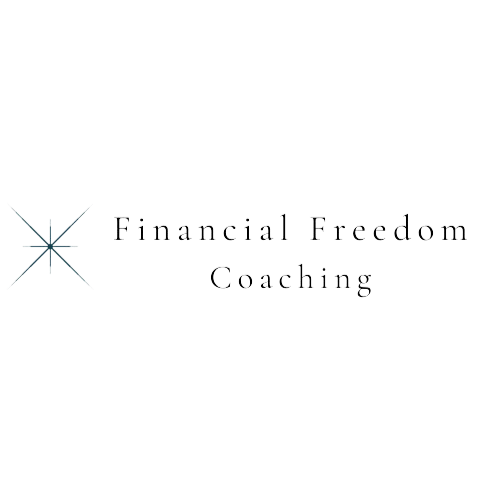Saving just a little each month will add up fast.
If you are able to put a hundred or more dollars aside every month into savings that is fantastic. If you are just starting out on your savings and financial journey this blog will cover some simple and easy ways to start you on a path of saving.
Over time as you keep saving and you see that savings number grow, it will be inspiring and help you keep going on your saving and financial journey.
In a previous blog I talked about an Emergency Fund. This is such an important thing to have because life happens and so do unexpected expenses. An emergency fund should have three to six months’ worth of your income set aside in it. Don’t panic, if you are just starting out, that is ok. Just starting out is way better than not starting at all. I like America Saves moto: Start Small. Think Big. If you are just starting out with your savings goal, set it at $500.00, for example.
How to Start Saving?
Record Your Expenses
It is important to know what money you spend. Keep track of all your expenses. That means anything from rent, utilities, loans, down to coffee on the go, cash for lunch or anything else you spend money on. You can track this using pencil and paper, spreadsheet, or an app. There are many apps out there that you can use, I personally use Every Dollar.
Once you have all your spending data, organized the numbers into categories, such as gas, groceries, mortgage/rent, entertainment, etc. Total each category, and use credit card and bank statements to make sure you have captured everything.
Include Saving into Your Flexible Money Management Plan
Now that you have the data for what you spend each month, you can begin to create your Flexible Money Management Plan. This will include expenses that are relative to your income. This will help you plan your spending limits for reach category and limit your overspending. Make sure you are setting money aside for non-monthly expenses such as auto maintenance and other things that you may only pay quarterly, semi-annually or annually. That way when these bills come in you have the money set aside for them. (Check out my blog Self Escrow – What? How? Why?)
Eliminate Extra Expenses and Overspending
Look for ways that you can cut back on expenses. Things that are nonessentials, such as dinning out, entertainment or retail therapy.
Find alternative activities:
- Instead of going out to eat, plan a picnic with friends at the park and everyone bring something.
- Do a movie night in with friends, instead of going out to the movies.
- Get out in nature, take a walk, hike or sit by a stream or river if possible.
- Find a free museum or other attraction.
- Take a historical trip of the city.
- Find a local meet up group that has similar interests as you.
Find things that you can cut back on and spend less. Look at your monthly fixed expenses such as phone bill, cable and even auto insurance. Looking at different plan options and or making sure you are getting the best rates possible can save you money. Check bank and credit card statements to make sure you aren’t paying for any subscriptions that you aren’t using or don’t really need anymore. This is a great way to save a few extra dollars.
Having a Savings Goal
Going back to the motto of Start Small. Think Big. It is important to set a goal. Think about what you want to save for. You can set a short-term goal and a long-term goal. Short-term, maybe a one-to-three-year goal and long-term, four plus years.
Once you have the goal, you can estimate how much money you will need and how long it will take to save that amount.
Short-term goal items may be: emergency fund (three to six months’ worth of living expenses, vacation, newer car, living room furniture.
Long-term goal items may be: down payment on a home, retirement, home remodel project, child education, leaving a legacy.
Know Your Financial Priorities
Once you know your income and expenses, you can focus on your goals and how you allocate your money to them. If you are going to need to replace your car in the near future, you can start putting money aside for that right away. Make sure you are not forgetting about your long-term goals, just because they are long-term. You still want to plan for retirement, for example, even while working on the short-term goals.
Where to put Your Money
Once you have your short- and long-term goals set, you can determine what kind of account you want to save your money in. There are many options such as: Standard Savings Accounts, High Yield Savings Accounts, Money Market Accounts, Certificate of Deposit Accounts, Retirement Savings Accounts and more.
Set Up Auto Transfers for Saving
This is one I personally utilize and I find it super helpful. Once you know how much money you have, the amount you want to save each month, and have the account set up, you can set up and automatic transfer. Many banks offer this option, that you can have an automatic transfer happen from your checking out into a specific savings account. You can choose when and how much is transferred each month. You can also check with your employer as many offer the option to send a set dollar amount from your paycheck into a savings account that you have set up. You are less likely to spend the money being it is automatically going to the savings account and you don’t have to think about it.
What the Savings Grow
Review your progress each month. Check in with how things are going, verify your income and expenses. This will help you stick to your savings plan, but also identify any areas where you may need to make adjustments. Over time, you may even find that you can save a little more each month than you had been savings previously. As you see the numbers grow in your savings accounts, it will inspire you to keep going and hit your goals faster.
What is another Benefit of Saving?
As you save money you will start to release the stress, anxiety and overwhelm you may be feeling when it comes to your money. When you have an emergency fund in place, when unexpected expenses come up, you can cover them without going into additional debt.
You can enjoy a life free from financial stress and anxiety.
Where Can I Get Help to Save Money?
I am here to help! Get personalized help sorting through your income, expenses and creating a personalized Flexible Money Management Plan. Schedule a free no obligation consultation call HERE and let’s discover what is possible for you on your financial journey.

